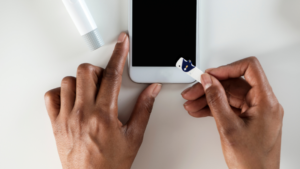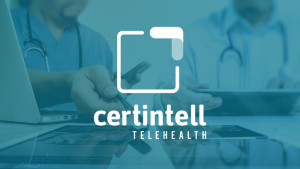There are several external factors that determine whether a patient will adhere to a treatment plan or not. Unfortunately, good health may not always be on the forefront of a patient’s mind. As the Office of Minority Health aims to focus on hypertension disparities in minority populations in 2021, it becomes ever so critical to find innovative ways to engage patients in their health. Minority populations, which can sometimes be vulnerable to other factors of worsening health, can sometimes be the most at risk for severe and adverse cardiovascular problems. Here are three simple strategies to help boost hypertension compliance and lessen these disparities:
Remote Patient Monitoring (RPM)
RPM can be extremely effective in decreasing margins of error and catching problems before they worsen. Through the use of technology, clinicians can continuously monitor vitals, so they don’t have to wait weeks or months between appointments to see how a patient’s condition is faring.
“Electronic monitoring is one the most reliable techniques to diagnose poor adherence and to follow and support adherence in chronic treatments,” says one study by Michel Brunier studying the relationship between technology aids and blood pressure measurements.¹
These routine monitorings can be used to signal a one-off problem or form a pattern to give clinicians and health partners a glimpse into how patients adhere to their treatment plan. A snapshot the day of the appointment may not be sufficient to deem it as truth. In this way, RPM helps build the whole picture so interventions can be enacted as quickly and as efficiently as possible.
“Remote patient monitoring through telemedicine allows physicians and health facilities to reach distant patients and increase the number of served patients, with consistent time savings, yet maintaining high-quality standards of delivered care,” says one study by Stefano Ombani, in favor of m-health and e-health services for hypertension management.²
Telepharmacy
A hypertension treatment could include the prescription of drugs. Patient error and forgetfulness can play into how rigorously the treatment plan is followed. Telepharmacy services help simplify things for patient, provider or payer.
Prescriptions can even be automated, refilled and delivered to the patient’s house in easy to take pre-packaged doses. By making health easy, patients could be more motivated to take part in it.

Interpersonal Relationships
Telehealth gives the opportunity to show patients you care outside the 15 minutes of an appointment.
“Health information technologies may help to build and maintain an enduring and long-term relationship between patients and their healthcare providers. E-health and telehealth may help empower hypertensive patients, and promote self-management, with improvement in patient’s medical condition. Digital interventions can help individualize the physician-patient relationship, and thus improve BP and cardiovascular risk control,” states the same study by Ombani.²
Telehealth services often naturally lead to a personalized care plan, one in which is adapted and culturally sensitive to a patient’s lifestyle.
“The quality of the relationship between the patient and clinician, the communication style of the clinician, and the patient-centeredness of treatment decisions all impact adherence. Trust is the critical currency in most human interactions and this applies especially to healthcare…A collaborative communication style and communication that includes circular and reflexive questions are more effective than a lineal and strategic inquisition style akin to a witness being cross-examined by an attorney. Thus, ‘did you take your medication(s)?’ or ‘why don’t you follow a low-salt diet?’ is less effective than ‘are you having any problems with your medications such as they’re too costly or cause unpleasant adverse effects?’ or ‘how does a low-salt diet affect you?’ or ‘what are some of the difficulties you have with a low-salt diet’?” says the analysis by Brunier.¹
Trust between minority populations and clinicians can also be less than those of their white counterparts. Building relationships outside the office is a good way to bridge the historical gap and ultimately have a more effective patient-provider relationship in the future.
“[Telemedicine] could be a way to help engage people that haven’t been engaged very well. You don’t feel like you’re constantly being poked and prodded, and somebody is asking you the same set of questions,” said doctor Keon Gilbert from this WebMD article on minority health/trust in health care.
How We Can Help
If this proposal feels overwhelming amidst administrative burden, health coaches can help fill the gaps. Our health coaches are trained to be culturally-sensitive, engaging and target long-term behavior change so that your patients can implement a care plan that works for them. Having this extra person can help patients feel supported and equally important throughout every step of their care journey.
Minority health is set to change drastically by 2030— are you ready to take these three steps to be a part of it?
SOURCES:
¹ Burnier, Michael. “A Review of Prevalence, Risk Factors, Impact, and Management.” AHA Journals, 28 Mar. 2019, www.ahajournals.org/doi/10.1161/CIRCRESAHA.118.313220.
² Omboni, Stefano. “Connected Health in Hypertension Management.” Frontiers, 13 June 2019, www.frontiersin.org/articles/10.3389/fcvm.2019.00076/full.



